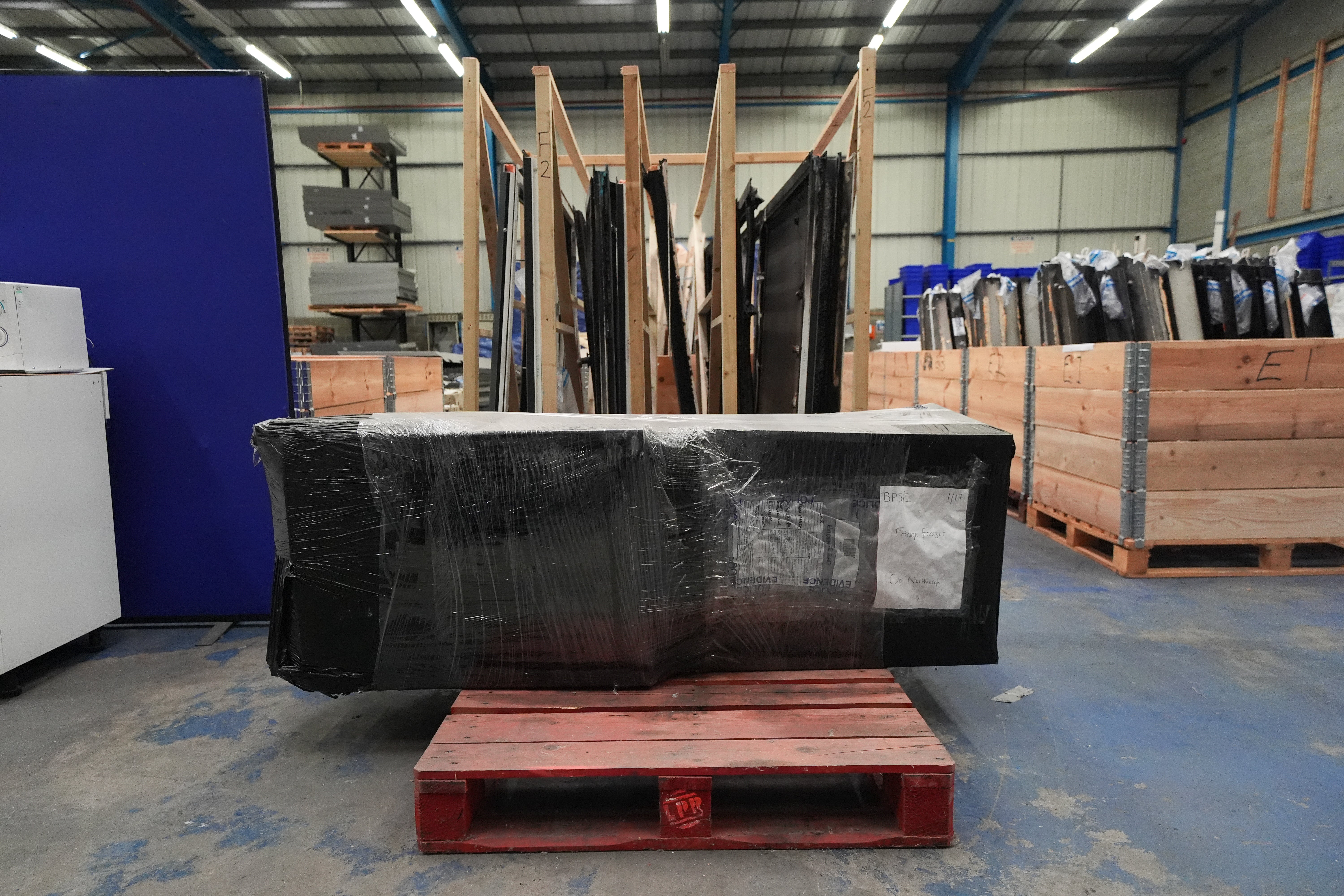The Independent's journalism is supported by our readers. When you purchase through links on our site, we may earn commission.
Seven years after Grenfell, we are still gambling on people’s lives
As a damning final report into the 2017 towerblock fire that claimed 72 lives is published, Peter Apps says that when blazes happen in residential highrises, the difference between life and death is luck


Your support helps us to tell the story
From reproductive rights to climate change to Big Tech, The Independent is on the ground when the story is developing. Whether it's investigating the financials of Elon Musk's pro-Trump PAC or producing our latest documentary, 'The A Word', which shines a light on the American women fighting for reproductive rights, we know how important it is to parse out the facts from the messaging.
At such a critical moment in US history, we need reporters on the ground. Your donation allows us to keep sending journalists to speak to both sides of the story.
The Independent is trusted by Americans across the entire political spectrum. And unlike many other quality news outlets, we choose not to lock Americans out of our reporting and analysis with paywalls. We believe quality journalism should be available to everyone, paid for by those who can afford it.
Your support makes all the difference.A fire breaks out of a window in a high-rise building. The combustible panels on the external walls ignite. The blaze rips quickly up the premises. Internal fire safety defects then allow smoke to spread rapidly into communal areas. Residents wake up, open their doors to toxic, thick smoke and suddenly face a desperate struggle to escape alive.
These are words that could describe the events in east London in the early hours last month – or the events seven years earlier at Grenfell Tower.
They would also be applicable to the events eight years before that in Lakanal House, south London, or 10 years before that in Irvine, Scotland – or eight years before that in Knowsley, Merseyside.
In fact, they would be applicable to more than a dozen fires in the years since Grenfell and many more going further back. This is simply no longer an unusual thing to see happen in Britain. As if to prove this point, just hours after the Dagenham fire, a second blaze broke out around the 25th floor of another East End tower block, near the Thames in Docklands.
The story from the Spectrum Building in Dagenham, which was gutted by a fire which broke out at around 2.44am on Monday, is grimly familiar.
It was previously an office block before being converted for use as 60 residential flats with a gym and nursery on the ground floor in 2016.
An investigation has been launched and will look into any specific failures, but we do know that office-to-resi conversions, built under a light-touch planning regime, have often been found to have serious internal fire safety defects.
In September 2020, external fire safety defects were discovered. Along with thousands of other buildings around the country, its external walls were assessed by surveyors to see if they met the requirements of mortgage lenders.
Along with thousands of other buildings around the country, it did not. The survey uncovered “high-pressure laminate” (HPL) panels – effectively highly compressed wood and glue.
This material is extremely flammable – a risk that has been demonstrated in many tests. It is the same material which was behind a very serious fire in Bolton in 2019 and the fatal fire at Lakanal House in 2009. “The next disaster is likely to involve HPL,” a fire safety academic told me in January 2019.
So why was it on this tall building? According to a submission from residents to a select committee in February 2022, the block was converted by a private builder and signed off by a small building control firm the builder would have appointed and paid.
We don’t yet know the details beyond that, but we do know non-compliance and the bending of rules were rife in the years before Grenfell, due to a poisonous mix of outdated regulatory guidance, misleading corporate marketing from those selling cladding products, sloppy cost-cutting practices in the construction industry, and weak oversight from those supposed to enforce the rules. Most dangerous cladding systems trace their routes to some or all of these factors.
But if it was found in September 2020, why was it still there in summer 2024?
The answer here is likely to be the lethargic and laissez-faire approach to fixing this issue over the last seven years.
It has largely been left up to building owners and developers to assess buildings and arrange the works to fix them, with few incentives to get going quickly – and lots of lawyers and insurers keen to pin the liability elsewhere.
The result is a mess where even despite new laws being passed in 2022 attempting to make responsible parties pay, most buildings are still stuck in a mire of disputes about qualifying and not qualifying leaseholders; exactly who is responsible and exactly what work needs to be done.

All the while, buildings are not being fixed. The Spectrum Building, with a small developer who had sold to a small, unconnected freeholder and a high proportion of buy-to-let leaseholders, would have been smack in the middle of these debates.
Residents were told in February 2022 that it would take two more years to make the building safe, which they warned was leaving them with “considerable stress” due to being trapped “in unsafe, unsellable flats”.
These were not wealthy homeowners. An office conversion in this area is pretty much the cheapest housing London has to offer, and they said many residents “queued for 24 hours outside, overnight, in January 2016, to buy their flat. This was the only way we could afford a property in London.”
In May 2023, a planning application was made to remove “non-compliant cladding” from the top of the building, combustible panels from around windows and combustible “privacy screens” from balconies.
At some point, scaffolding went up and work commenced. A Facebook post a week ago from the supplier of the replacement cladding said work was still underway.
This is a risky period in any recladding job. Lots of workers are in direct proximity to the cladding, which increases the ignition risk, and the scaffolding adds an extra layer to the risk from the external wall. Fire retardant boards and sheeting are available – but aren’t always used.
On top of this, we have not really answered the question of what to do to get everyone out when a fire like this happens.
The Grenfell Tower Inquiry recommended mandatory manual fire alarms, evacuation plans and specific plans for residents with disabilities – who died disproportionately at Grenfell, and will be the most likely casualties of any future fire.
But these recommendations were ignored. We have had a bit of research into evacuating highrises, but the process has been largely booted into the long grass with the government preferring to focus on changes to new build regulations, which are easier to achieve.
The result is that when these fires happen – and they will keep happening – the difference between life and death turns on luck.
It would only have taken higher winds, or more people trapped on multiple floors, or a delay accessing the building, or residents not taking great personal risk to alert their neighbours, and we would probably be discussing the aftermath of another multi-fatality fire. It is only a few months since 10 people lost their lives in an eerily similar-looking blaze in Valencia.
As it was, the LFB rescued 20 residents from the building in Dagenham, which speaks of how far the organisation has come since its failures at Grenfell Tower – but is also far too much to ask of the brigade. Anyone who has studied the evidence from the Grenfell inquiry should know how hard it can be to reach those trapped once a fire has taken hold. We can’t simply keep asking firefighters to do the impossible.

There are 4,613 residential buildings in England identified with unsafe cladding, just 29 per cent have completed works, and the number of identified buildings grows every month as more are found. Tens of thousands of residents are stuck inside them, waiting for work to finish and hoping a disaster like this doesn’t strike in the meantime.
Labour has promised to get a grip on fixing them, and it could not have asked for a clearer reminder of what is at stake.
At the end of the Grenfell Tower Inquiry, its lead counsel, Richard Millett KC, said the evidence allowed him to draw one conclusion even before the report was written.
He said there was “nothing unknown or not reasonably knowable which caused or contributed to the fire” and “as a result … each and every one of the deaths that occurred in Grenfell Tower on 14 June 2017 was avoidable”.
If the deaths at Grenfell were avoidable in 2017, how much more avoidable would they be in another building with dangerous cladding now? We have had seven years to put things right. And yet we keep gambling.
Peter Apps is contributing editor at Inside Housing magazine and author of ‘Show Me the Bodies: How We Let Grenfell Happen’ (Oneworld, £10.99)
Join our commenting forum
Join thought-provoking conversations, follow other Independent readers and see their replies
Comments